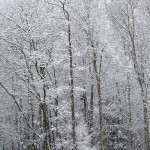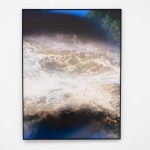Memory is a Verb: Diane Hemingway: The Wild Cosmos
Memory is a Verb: Exploring Time and Transience brings together twelve women photographic artists exploring the liminal space between time and transience. Represented in this body of work are the universal concepts of loss, mortality, and legacy, and the exploration of what inspires us to seek solace, and reexamine our histories; subsequently unearthing discoveries about ourselves, our relationships, and our place in the universe.
This week and next we are sharing projects from the exhibition, Memory is a Verb: Exploring Time and Transience, with interviews by the artists. Today we feature the work of Diane Hemingway who was interviewed by Sarah Hadley. On Thursday, April 21, 5 pm PST, Hemingway will be giving an Artist’s Talk through the Los Angeles Center of Photography on this project. Hemingway’s project, The Wild Cosmos celebrates her connection to the natural world after devastating personal losses, “which reconsider grief as a natural, wonder-filled experience.“
Memory, often regarded as fixed or reflective of reality, in this project actively functions as a transformative shape-shifter. The ongoing tension between two seeming opposites – objective fact and subjective perception – together shape a cohesive whole, creating something larger and more nuanced than just the sum of its parts. As new insight illuminates the past, this influences our experience of the present moment; which is itself slipping into the past at the instant we seek to define or quantify it. In this manner, time is elusive, elastic, bending back and over itself; perception comes full circle.
The project Memory is a Verb: Exploring Time and Transience began as the world was besieged with fear and anxiety during a pandemic, longing for a return to normalcy. Feeling a sense of loss, we craved connection to our past and to each other. The pandemic also offered a unique moment in which to interpret things differently. Beyond nostalgia, which selectively employs memory as a self-soothing balm, our exploration reconsidered how we view the past, and what is of purpose and significance, in light of our changed circumstances.
Diane Hemingway is an artist who tells stories of life through photography and interdisciplinary media. Her photographic work, which includes written and recorded prose, explores the spiritual, emotional, and physical link between the natural world, memory, and lived experience.
Hemingway received her BS in Business from the University of New Hampshire, Durham, New Hampshire and her MFA, from Maine Media College, Rockport Maine. She has exhibited nationally including exhibitions at the A Smith Gallery, the Griffin Museum of Photography, the Midwest Center for Photography, the New York Center for Photographic Art, the Panopticon Gallery, and the Praxis Gallery, among others.
Hemingway has published two monographs, The Fire in my Throat in 2021 and The Wild Cosmos in 2020 which is a multi-media publication combining image, text, and audio. Her work has also been included in editions published by NORDphotography, curated by Cig Harvey.
She lives and works in Maine.
Follow Diane Hemingway on Instagram: @dianedhemingway
Follow Memory is a Verb on Instagram: @memory_is_a_verb
The Wild Cosmos
The photographs and recorded prose in The Wild Cosmos chronicle my interior journey through life and profound loss.
Even as an adult, nothing prepared me for when the stars–my mom, dad, and brother–fell from the sky. Seeking solace, I immersed myself in the land and in my art, trusting that my world would right itself.
Looking for light in the darkness, I retraced the cross country trips of my youth and explored the backroads of Maine. I wanted to rekindle the wonder of my untethered childhood while remembering those I had lost.
My sense of wonder comes from my spiritual, emotional and physical connection to the natural world. My parents loved the outdoors, and each summer, our family piled into the Suburban along with tents, sleeping bags, backpacks, and our small collection of 8-track tapes. We’d wind our way across the country, from Maine to California, sleeping under the stars.
Nature is a portal to survival. Much like the transcendentalists, I believe that it is essential to experience the simplicity and solitude of nature to really know what we are made of. I emerged resilient like the wild cosmos, a beautiful wildflower that can thrive in almost any circumstance.
The images in The Wild Cosmos are grouped into categories from my experiences: loss, whimsy, wonder, and mysticism. I pair my photographs with audio versions of my writing loosely based on my journal of field notes and dreams. The installation will include sized mural prints and projections paired with audio accompaniments, which reconsider grief as a natural, wonder-filled experience.
Both my photography and my recorded prose are love letters to places, memories, dreams and family. Each is an invitation to pay attention. -Diane Hemingway
Sarah Hadley: When did you first pick up a camera and when did you know this was the medium for you?
Diane Hemingway: I first picked up a camera in 2014 after leaving a long software engineering career. I had recently lost my mom, dad, and brother and felt a deep desire to return to my roots. Having spent my childhood fully immersed in the sensory wonders of the natural world, photography became the perfect medium for my art. It allowed me the opportunity to disappear into the land and fully connect with this wild earth while remembering those I had lost.
Sarah Hadley: How do you think having another career has influenced your work?
Diane Hemingway: Having had another career before I began photography influenced my work more than I would have imagined. Those decades passed so quickly, leaving me with a keen awareness that time is unstoppable. I use photography to slow down my life. The world is filled with magic and wonder and I don’t want to miss a thing. Today I hold time more tightly than ever.
Sarah Hadley: How important is journaling and writing to your art practice?
Diane Hemingway: Writing is a very important part of my art practice. My mind is a tangle of thoughts and memories and journaling is my way to make sense of them. I believe that my writing and my photography are intertwined, each informs the other. It is an important practice for understanding the ever-present conversation between my inner and outer world.
Sarah Hadley: When did you decide to incorporate text and sound in your work and why?
Diane Hemingway: I first decided to incorporate text and sound in my work during my MFA program. I wanted to ignite new feelings by pairing my photographs with audio versions of my writing. I selected pairings that worked together on a spiritual or subconscious level rather than making overt connections. I believe all the senses in our bodies are simultaneously working together. I liked the idea of intertwining the sense of sight with sound so that they shaped one another, much like tasting the sweetness of cinnamon just by smell.
Sarah Hadley: Has the natural world always been important to you?
Diane Hemingway: Yes, nature has always been important to me. It was such a big part of my childhood. My parents loved the outdoors, and each summer, our family piled into the Suburban along with tents, sleeping bags, backpacks, and our small collection of 8-track tapes. We’d wind our way across the country, from Maine to California, sleeping under the stars. Our summer trips fostered my strong spiritual, emotional, and physical connection to the natural world. Much like the transcendentalists, I believe that it is essential to experience the simplicity and solitude of nature to understand oneself better.
Sarah Hadley: A lot of your work has a mystical and otherworldly quality. Where does this come from?
Diane Hemingway: The mystical is very prevalent in my work. The Wild Cosmos series is divided into four chapters, one of them titled The Mystical is a Silent Drum. The dictionary defines mystical as: inspiring a sense of spiritual mystery, awe, and fascination. When I am experiencing the mystical, it is difficult to disentangle truth from fiction. A powerful conversation between my body and the living, breathing earth is happening. I am somewhere between dream and reality. The mystical cannot be explained, it leaves unanswered questions of time, place, and reality. The mystical gives me a glimpse into the other side. To be believed, the moment has to be captured.
Sarah Hadley: Who would you say are your greatest influences?
Diane Hemingway: My mom and dad were key influences when it came to fostering a joy of discovery, in both the natural world and in my art. Time and again, I pinch myself when I recall my untethered childhood. When I look back, even at my earliest work, I realize that this is the life that has always been inside me, where the natural world nourishes my soul. When I make art, I can’t help but recall the lessons of my youth, that Mother Nature has scattered wonder everywhere. We have to look for it.
Sarah Hadley: What are you working on now?
Diane Hemingway: I am currently on a 10-week long road trip from Maine to California. Although I am not entirely sure what my next project will be, it should be no surprise that I will make my art in the natural world. I never want to lose my connection to this world. I have always loved the following Basho quote as a reminder.
There is nothing you can see that is not a flower;
there is nothing you can think that is not the moon.
BASHO
Posts on Lenscratch may not be reproduced without the permission of the Lenscratch staff and the photographer.
Recommended
-
Time Travelers: Photographs from the Gayle Greenhill Collection at MOMADecember 28th, 2025
-
Marcia Molnar: The Silence of WinterDecember 24th, 2025
-
Paccarik Orue: El MuquiDecember 9th, 2025
-
Jackie Mulder: Thought TrailsNovember 18th, 2025
-
Interview with Maja Daniels: Gertrud, Natural Phenomena, and Alternative TimelinesNovember 16th, 2025




































































